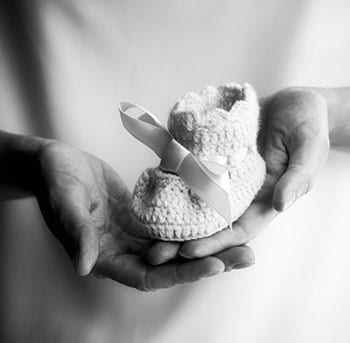Pregnancy and Infant Loss

The loss of a baby during pregnancy remains a sad reality for many families. Learn what the Centers for Disease Control and Prevention (CDC) is doing to understand the preventable causes of stillbirth. Read Milan’s story, as told by his mother Karina, about their family’s experience with the loss of a child through stillbirth.
What is Stillbirth?
A stillbirth is the death of a baby before or during delivery. Both miscarriage and stillbirth describe pregnancy loss, but they differ according to when the loss occurs. In the United States, a miscarriage is usually defined as loss of a baby before the 20th week of pregnancy, and a stillbirth is loss of a baby at 20 weeks of pregnancy and later.
How Many Babies Are Stillborn?
About 1 pregnancy in 100 at 20 weeks of pregnancy and later is affected by stillbirth, and each year about 24,000 babies are stillborn in the United States.1
Milan’s Story
Karina was 39 weeks pregnant, expecting to give birth to her baby Milan.
Karina was healthy throughout her pregnancy. She saw a doctor regularly and did all of the normal testing and ultrasounds. Both the doctor and head midwife thought everything was fine.
During a check-up, one of Karina’s midwives listened for Milan’s heartbeat. Karina was in a room with her two midwives, her husband, a nurse, and an ultrasound technician. It was quiet as they listened for a heartbeat. They could not hear anything. Her husband and healthcare providers sat with Karina as she cried. Karina was 39 weeks pregnant when she learned that her baby had died. Karina was scared, but she knew that she had to deliver the baby or she risked her own life as well.
Karina was induced and she gave birth at home. She was grateful to give birth at home with people who loved her and treated her with great kindness.
Karina and her husband went on to have another child, named Phoenix, who gives their family great joy.
Karina and her husband went on to have another child, named Phoenix, who gives their family great joy.
What Can Be Done?
The causes of many stillbirths are unknown. Stillbirth occurs in families of all races, ethnicities, and income levels, and to women of all ages. But there are things that a woman can do before and during pregnancy to increase her chance of having a healthy baby:
- Be sure that medical conditions, such as high blood pressure and diabetes, are under control before and during pregnancy.
- Avoid smoking cigarettes during pregnancy.
- Strive to reach and maintain a healthy weight before pregnancy.
CDC works to learn more about who might have a stillbirth and why. CDC tracks how often stillbirth occurs and looks at the causes of stillbirth. Knowledge about the potential causes of stillbirth can be used to create recommendations, policies, and services to help prevent stillbirth.
To learn more about CDC’s activities, visit the Stillbirth CDC Activities page.
If you or someone you know has experienced stillbirth, visit our resource page to find organizations that may offer support.
References
- MacDorman MF, Gregory EC. Fetal and perinatal mortality: United States, 2013. National vital statistics reports: from the Centers for Disease Control and Prevention, National Center for Health Statistics, National Vital Statistics System. 2015; 64(8):1-24.























.png)











No hay comentarios:
Publicar un comentario